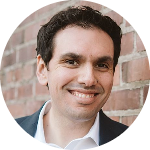The Science of Timing and Strategic Procrastination
You can rock your college experience by unlocking the secrets of creativity and timing your performance, setting yourself up for extraordinary success in the future.

Forget the old-school idea of time management; it's just not cutting it anymore. Instead, let's dive into the incredible world of behavioral science to supercharge our productivity by tapping into the genius of Adam Grant's Originals: How Non-Conformists Move the World and Daniel Pink's When: The Scientific Secrets of Perfect Timing. You can rock your college experience by unlocking the secrets of creativity and timing your performance, setting yourself up for extraordinary success in the future.
We are consistently told that we procrastinate way too much, but Grant highlights research on strategic procrastination in his work. Contrary to traditional beliefs about productivity and time management, Adam Grant shares research that argues that moderate procrastination can stimulate creativity and innovation. Allowing ideas to incubate opens you to more original and effective problem-solving.
The key is to balance instant action and excessive delay, embracing strategic procrastination to foster creative thinking.
Daniel Pink's book explores the science behind timing and its impact on various aspects of life, including productivity, decision-making, and overall well-being. The main takeaways from the book are:
Timing matters: Pink emphasizes that our actions and decisions can significantly influence their outcomes. Understanding and leveraging the science of timing can improve our effectiveness and overall quality of life.
Chronotypes: People have different chronotypes (biological clocks), determining their peak performance times during the day. Understanding our chronotype allows us to align our tasks and activities with our natural energy levels for optimal productivity. Pink identifies three types: morning larks, night owls, and third birds.
Daily rhythms: Pink discusses the daily cycle of peak, trough, and recovery. He explains that people generally experience peak energy levels in the morning, a dip in the early afternoon, and a recovery in the late afternoon or early evening. Scheduling tasks according to these natural rhythms can improve performance.
Breaks: Regular breaks throughout the day are crucial for maintaining focus, reducing stress, and boosting overall productivity. These restorative breaks may include walking, socializing, or engaging in mindfulness practices.
Beginnings and endings: Pink argues that how we start and finish activities or projects can impact our motivation, satisfaction, and success. He suggests that mindful of beginnings and endings can help us make the most of these critical moments.
Synchronizing with others: Pink emphasizes the power of synchronization or coordinating our actions with others to foster collaboration, build trust, and achieve better outcomes.
By integrating these principles, you can develop a personalized productivity management approach:
Embrace strategic procrastination to foster creativity and enhance problem-solving capabilities. Allow time to reflect on ideas and explore various possibilities before diving into tasks or projects.
Align your tasks with your natural energy levels and take regular breaks to optimize productivity and overall well-being. Schedule demanding tasks during peak performance hours and incorporate restorative breaks throughout the day.
So the next time you think this is a time management issue, examine whether your productivity is impacted by timing or if you can leverage procrastination more strategically.
Reflection Questions:
How can you incorporate strategic procrastination into your routine to enhance creativity and problem-solving skills?
What is your chronotype, and how can you adjust your schedule to align your most important tasks with peak performance hours?
What strategies can you use to ensure regular breaks throughout the day? How might these breaks contribute to your overall productivity and well-being?
